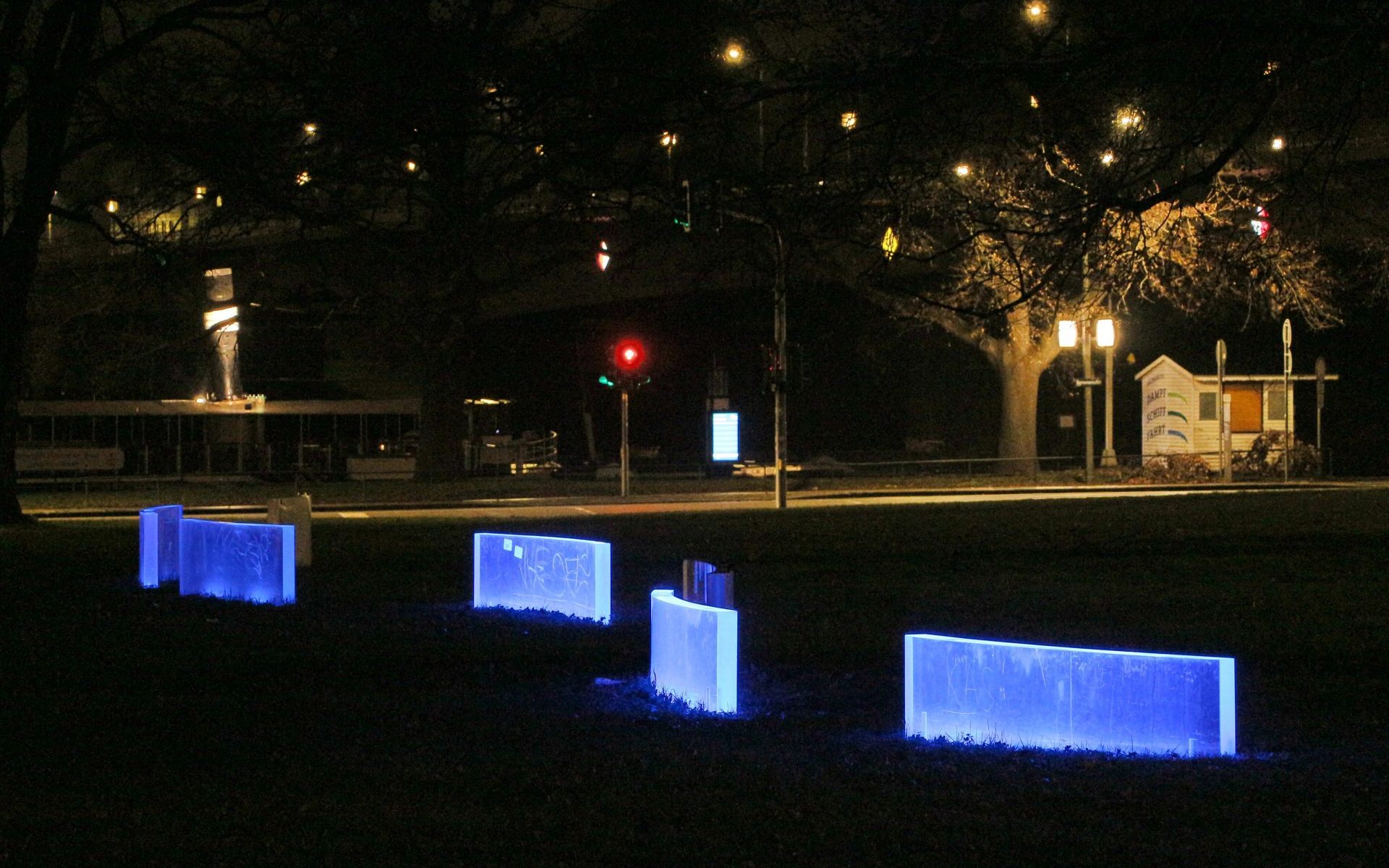Mnemosyne. Water Art Path of the Dresdner Sezession 89, Dresden, 1993-2000.
The WasserKunstWeg (Water Art Path) Mnemosyne was created thanks to an initiative launched by women artists from the “Dresdner Sezession 89”.In the early 1990s they sought, through artistic expression, to revive memories of the many small urban waterways in Dresden, which had disappeared or become hidden from sight as a result of urban developments. From the year 2000 onwards, the most important waterway in this scheme was the Kaitzbach, an almost twelve-kilometre-long river that runs through the south of Dresden on the left bank of the Elbe. It flows from its source in a valley protected from the city by a range of hills, reaches Dresden city centre at the Great Garden, crosses the former fortress glacis and finally flows into the Elbe just east of the Brühl terrace. About half of the stream’s course now lies hidden underground and is no longer visible in the city.
The artists used this situation as the starting point for their work. They named their project after a Goddess from ancient Greek mythology: the titanic Mnemosyne, daughter of Uranos and Gaia (of heaven and earth), Zeus’s lover and mother of the nine muses. In the Greek pantheon, Mnemosyne is the Goddess of memory and remembrance, but she also represents water, femininity and art.
Artists highlighted the course of the Kaitzbach from its source to its mouth thanks to various artistic installations which together form a narrative. This technique was also employed in places where the stream runs underground, making it visible once again and recalling its presence in the urban space. Some of the artistic creations are very discreet and difficult to find for those who do not know where to look. One such creation is “Haltepunkte» by BKH Gutmann which may be found in front of Dresden’s town hall. However, Kirsten Kaiser’s “Aqualux”, which marks the mouth of the Kaitzbach in the former gondola harbour of the electorate on the Elbe, now a park, stands out more clearly in the urban landscape. It consists of a long series of curved acrylic panes that represent a virtual waterway. When night falls, these panes light up blue from within, creating a very poetic effect.
Hans-Georg Lippert

